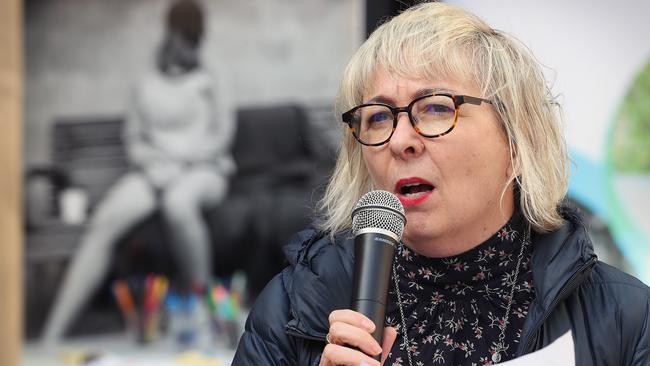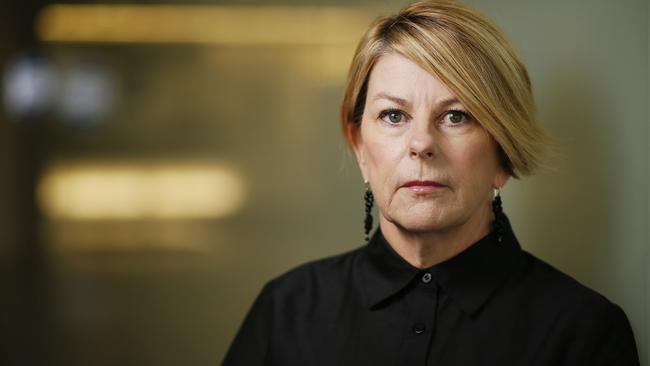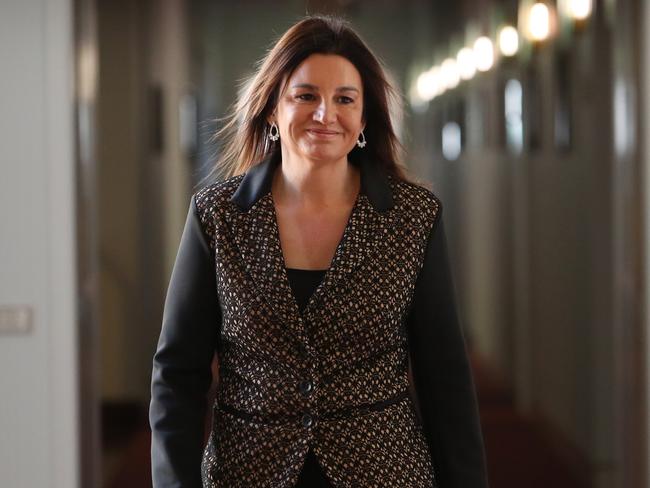TasWeekend: $157 million housing debt deal offers new hope for homeless
The deal to waive Tasmania’s housing debt has been signed, but it comes with a few caveats. So how the state can best spend the extra funds?
Lifestyle
Don't miss out on the headlines from Lifestyle. Followed categories will be added to My News.
THE State Government has received an extraordinary dose of good fortune this past week, with news that the Federal Government has waived the $157 million public housing debt owed to the Commonwealth by the state.
But with Tasmania’s public housing budget suddenly increasing by about $15 million a year as a result, the message from the community and affordable housing sector is a very firm and clear one: don’t squander it.
CLEAN $LATE TO TACKLE THE STATE’S HOUSING CRISIS
EDITORIAL: HISTORIC DAY AS HOUSING DEBT WAIVED
The deal to waive the debt already comes with strict conditions, chiefly that the additional money now freed up in the state’s budget must be redirected to programs that increase access to social housing, reduce homelessness, and improve housing supply across Tasmania.
This is good news for the 3300 people currently on the State Government’s Community Housing waiting list, and other non-government organisations in the sector are optimistic that it will be just the boost needed by already strained services. But the question still remains about exactly what form that additional $15 million worth of expenditure each year should take.
According to Director of Housing Peter White, speaking at the House of Assembly Housing affordability inquiry on August 13, the amount of money saved on loan repayments and interest each year would allow the construction of between 80 and 100 new homes each year.
And, according to Shelter Tas CEO Pattie Chugg, that is precisely how it should be used.
“As the expert peak body we know the best value in the long-term comes from investing directly in building new social housing. The full amount of $15 million each year needs to be quarantined for new dwellings, over and above existing commitments, in a housing-first model.
“This is the best use of the funds because all the evidence shows that investment in community and public housing prevents housing stress and homelessness, and provides pathways out of homelessness.”

It is no secret that Tasmania is experiencing a chronic shortage of affordable housing and significant levels of rental stress.
More than 120,000 Tasmanians live below the poverty line and 8000 households are living in rental stress, with the shortage of affordable rentals being the major cause of homelessness across the state.
“Right now in Tasmania, homelessness and housing stress is a reality for so many,” TasCOSS CEO Kym Goodes says. “Families with children who need stability for schooling and broader community support, young people trying to get a job that requires them to be near good public transport, women over 50 who want to stay in the community near their family, men who have experienced redundancy or marriage breakdown.
“There are two parallel actions that are needed,” she says. “We must continue to quickly find housing for those who are currently homeless to ensure they are safe and can transition into more stable options.
“The other important action is the completion of a comprehensive housing demand analysis, which will provide the evidence and a breakdown of where the need is highest, both for the range of people requiring a home, types of homes and geographical locations. This will ensure the current and additional funds now available can be strategic and targeted in how they are spent across Tasmania.”

The debt was incurred when the state borrowed from the Federal Government to build public housing between 1956 and 1989, with repayments for the 2019-2020 financial year expected to comprise $8 million in principal repayments and $7 million in interest. With that debt now forgiven, it will save the state a total of $230.2 million.
The Mercury made the demand on its front page on June 20 this year that Federal Housing Minister Michael Sukkar should forgive that debt as the best way of resolving the homelessness and housing crisis in Tasmania.
EDITORIAL: BETTER USE FOR DEBT PAYMENT
That demand did not only resonate here in Tasmania, but right around the country. Within hours of that day’s edition hitting news stands, Sukkar had responded that he would consider waiving the debt.
Tasmanian Senator Jacqui Lambie also latched on to that demand, later using the debt issue and Sukkar’s words as leverage to force the Government to follow through on forgiving the debt.
If the Government wanted Senator Lambie to vote in favour of their tax cut packages, they needed to agree to her demands.
The gambit worked, and this week Sukkar and Tasmanian Housing Minister Roger Jaensch signed the historic agreement to wipe out the remaining $157 million in debt.
But in order for the fight to be properly recorded as a victory, the money needs to be well spent.
It is still early days, of course, and the State Government is yet to reveal what its potential plans for the extra money will be.

The community housing and homelessness sector have plenty of suggestions, though, starting with addressing youth homelessness — the pointy end of housing crisis for almost a third of all Tasmanians currently on the community housing waiting list.
Youth Network of Tasmania CEO Tania Hunt says that of the 3300 applications currently being processed, 1003 come from people aged under 25, with young people being disproportionately represented in Tasmania’s homeless population.
With an average waiting time of 66 weeks to have an application processed, it is simply far too long for many to endure.
“For the number of young people who have applied for community housing, there is a further number of those who have not and are still couch-surfing or homeless,” Hunt says.
“When it comes to youth homelessness, young people experience it mainly in the form of couch-surfing, or a range of people living in overcrowded dwellings, struggling to find safe and suitable and affordable accommodation in a private market where they are struggling to pay the rent that is asked.”
TASWEEKEND: STRUGGLES OF THE WORKING HOMELESS
HOMELESS LAUNCH A CRY FOR HELP
HARSH REALITY OF THE ‘OTHER’ TASMANIA
Hunt says that given the unusually high proportion of young people on the waiting list, more needs to be done to break the cycle of homelessness early and reduce the strain on the system further down the line.
“What we need to see is young people being prioritised to live their best life, to live to their full potential and participate in life. Without a house, it is difficult to maintain steady employment or to study,” she says.
“There is this perception that young people are homeless by choice. People ask that question: ‘Why don’t they move back in with their families?’ But it just isn’t always that simple. Young people might be escaping all kinds of situations at home that lead to them being homeless. They can’t always go back to the environment they left.
“We also know that only 2.2 per cent of applications by young people for community housing are successful, so we need to look into why that is.”

Goodes says it will only be possible to spend the additional housing budget wisely once there is a firm strategy in place, and the University of Tasmania is currently working on a demand assessment study that should be able to give better guidance when it is completed in around eight to ten weeks.
“The completion of a comprehensive housing demand analysis will provide the evidence and breakdown of where the need is highest, both for the range of people requiring a home, types of homes and geographical locations,” she says.
“This will ensure the current and additional funds now available can be strategic and targeted in how they are spent across Tasmania.
“We can than look at the types of dwellings that will be most appropriate to those needs, whether it’s high density units for younger people, or homes for families located close to schools, or for older people near GP services, for example.
“You can build a bit of everything, but you need to know, strategically, if it is the right mix.”
Goodes also said best practice for building new community housing properties was not the old broadacre model, in which entire new suburbs were created, but rather to disperse new properties among existing suburbs and growth areas.
“With a development like the one at Huntingfield in Hobart at the moment, with 400-500 new houses being built, out of those you would expect about 15 per cent would be for social housing, another 15 per cent would be affordable housing for first home buyers or lower incomes in the private market, and the remaining 70 per cent would be just private investor models.
“This is called inclusion rezoning. It is not in legislation in Tasmania currently, but there are some requirements that can be made for new developments on rezoned Crown land.”

Ben Wilson, former CEO of Wilson Homes, is now CEO of Evolve Housing and executive manager of Housing Services with community provider Centacare, who supply community housing properties for the state’s public housing system.
Wilson says that with a little forward planning, the Tasmanian Government can guarantee an annual increase in community housing well above the 80-100 homes proposed by Peter White.
“If the Government can leverage its resources properly within the housing sector, they can effectively turn that $15 million per year into $30 million,” he says.
“When we respond to that demand for new homes and build them, we actually go into debt ourselves. We borrow money to complete those homes, but we have access to debt as a community provider to leverage our assets to borrow money. So, instead of just taking that $15 million and pouring it directly into the construction of new homes, if the Government approached it as providing ongoing subsidies for the construction of new homes, you could turn that figure into 500 new homes over three years.
“And that rate could continue into the future because, if we have the security of ongoing subsidies, we can forward-plan our constructions and have builders lined up well into the future to keep it rolling.”

Wilson also rejected any suggestions that Tasmania’s building industry would be stretched too thin by the additional construction work.
“Statewide, we reported 2800 building approvals this past year, and in past years we have delivered over 3000. So the industry is strong, and if the opportunities are provided we can definitely respond to that need.”
Most importantly, though, Goodes says we need to keep in mind that whenever we discuss matters of community housing, we are not just talking about bricks and mortar, but people — often the most vulnerable people in our society, people who continue to suffer while they wait for a long overdue solution.
“All the issues we are currently seeing in our community housing sector are the direct result of years of under-investment,” she says.
“In an essential service like housing, when there’s a disruption in the market like the one we have seen, which has resulted in thousands of Tasmanians without anywhere safe to live, let alone somewhere affordable, it has left us having to make really difficult decisions about who gets housed first in a sector where demand far exceeds supply.
“These are often horrific decisions about the future lives of humans — real people. They might be a woman escaping family violence and living in her car with two small children, or a young person living on the street after fleeing a terrible home situation. How do you choose?”
Hopefully, with the right strategy in place, these decisions just might become a little easier.


